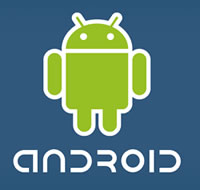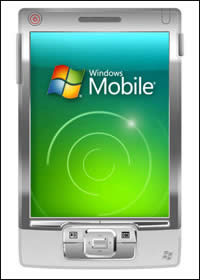Difference between Android and Windows Mobile
Key Difference: Android is an open source, free, Linux-based operating system for smartphones and tablets. The system was designed and developed by Android Inc., which was funded and later purchased by Google in 2005. Windows Mobile is a family of operating systems on smartphones and pocket PCs. Windows Mobile has been discontinued by the company, with the final version of Windows Mobile being 6.5.5.
 Smartphones are a recent phenomenon and weren’t always this popular. Prior to the Android vs. iPhone vs. Windows debate, there would only be the Windows palm pilots or pocket PCs that ruled the market. These were also only popular for many businessmen keeping appointments and phone numbers in one place. Then Android was introduced to the market in 2007 and a lot of changes were made bringing technology to the point we are now. While, many people believed that Android was a just a rookie gearing up to fail, not many people saw that it would become one of the most popular smartphone OS in the market. This has also caused many other companies to step up and challenge Android. Windows has recently launched the Windows 8 Mobile systems and is currently a popular OS among Nokia fans. Android and Windows Mobile are two different operating systems that run on phones, smartphones and tablets.
Smartphones are a recent phenomenon and weren’t always this popular. Prior to the Android vs. iPhone vs. Windows debate, there would only be the Windows palm pilots or pocket PCs that ruled the market. These were also only popular for many businessmen keeping appointments and phone numbers in one place. Then Android was introduced to the market in 2007 and a lot of changes were made bringing technology to the point we are now. While, many people believed that Android was a just a rookie gearing up to fail, not many people saw that it would become one of the most popular smartphone OS in the market. This has also caused many other companies to step up and challenge Android. Windows has recently launched the Windows 8 Mobile systems and is currently a popular OS among Nokia fans. Android and Windows Mobile are two different operating systems that run on phones, smartphones and tablets.
Android is an open source, free, Linux-based operating system for smartphones and tablets. The system was designed and developed by Android Inc., which was funded and later purchased by Google in 2005. Android was announced to the world in 2007 along with a new alliance that devoted itself to advancing open standards for mobile devices. Android is a open source software, which means that it is free of cost and can be used, modified and re-sold. This is one of the reasons for its massive popularity, it allowed users to create and change any and all of Androids codes and settings trying to create the perfect OS. Android also has a large community of developers that constantly write applications and codes for the system.
Another popular feature of Android is the number of apps and the Google Play. Google Play, formerly known as the Android Market is an application distribution platform, where developers publish applications for the many Android users. The applications are also developed by an open community and many of them are free for downloading through Google Play. Android is also popular because of constant and frequents updates that are available by Google. Google releases major updates every six to nine months, with minor updates much faster. The latest Google update was the 4.2.2 Jelly Bean, which is Google’s 17th update since the launch of Android.
 Windows Mobile is a family of operating systems on smartphones and pocket PCs. Windows Mobile is the predecessor of Windows Phone, which is the latest series of operating systems for smartphones. Windows Mobile has been discontinued by the company, with the final version of Windows Mobile being 6.5.5. Windows became popular mainly in pocket PCs, which allowed businessmen to maintain their daily appointments, add appointments, access the internet and some even allowed users to make phone calls. Windows Mobile was based on the Windows CE kernel and was introduced as the Pocket PC 2000 operating system. The system was designed to resemble the desktop version of the PC, making it more familiar to people. Windows Mobile offered software applications from the Windows Marketplace.
Windows Mobile is a family of operating systems on smartphones and pocket PCs. Windows Mobile is the predecessor of Windows Phone, which is the latest series of operating systems for smartphones. Windows Mobile has been discontinued by the company, with the final version of Windows Mobile being 6.5.5. Windows became popular mainly in pocket PCs, which allowed businessmen to maintain their daily appointments, add appointments, access the internet and some even allowed users to make phone calls. Windows Mobile was based on the Windows CE kernel and was introduced as the Pocket PC 2000 operating system. The system was designed to resemble the desktop version of the PC, making it more familiar to people. Windows Mobile offered software applications from the Windows Marketplace.
Windows Mobile had many features such as: multitasking, ability to navigate a file system, Internet Explorer Mobile, Windows Media Player, Microsoft Office Mobile, Outlook Mobile and Internet Connection Sharing. The device came with stylus capabilities and had resistive touch technology, which required a stylus for input. Many devices also made it easier to navigate and type by introducing slideout keyboards or keypads.
|
|
Android |
Microsoft Mobile |
|
Company/ Developer |
|
Microsoft |
|
Programmed in |
Java, C, C++ |
C++ |
|
OS family |
Unix-like |
Windows |
|
Initial release |
September 23, 2008 |
April 19, 2000 |
|
Supported platforms |
ARM, MIPS, x86, I.MX |
x86 |
|
License |
Apache License 2.0 Linux kernel patches under GNU GPL v2 |
Proprietary (Microsoft EULA) |
|
Default user interface |
Graphical (Multi-touch) |
Graphical |
|
Working state |
Current |
Discontinued (Replaced by Windows Phone) |
|
Source model |
Open source software |
Licensed software |
|
Updates |
Updates are provided by different parties in the consortium. |
Updates are only done by Microsoft. |
|
Applications |
Applications are created by an open community of developers. |
Applications are created by tie up companies and Microsoft. |
|
Touch style |
Capacitive technology |
Stylus-centric, but newer phones offer capacitive technology. |
|
Offers native support for |
Google Sync for Gmail, Contacts, and Google Calendar. |
Mail, Exchange, Outlook Contacts, Calendar, etc. |
|
Number of applications |
Over 700,000 applications |
Limited number of applications. |
|
Language support |
Multiple language support |
Limited language support |
Image Courtesy: digitaltrends.com, raybiztech.com









Add new comment